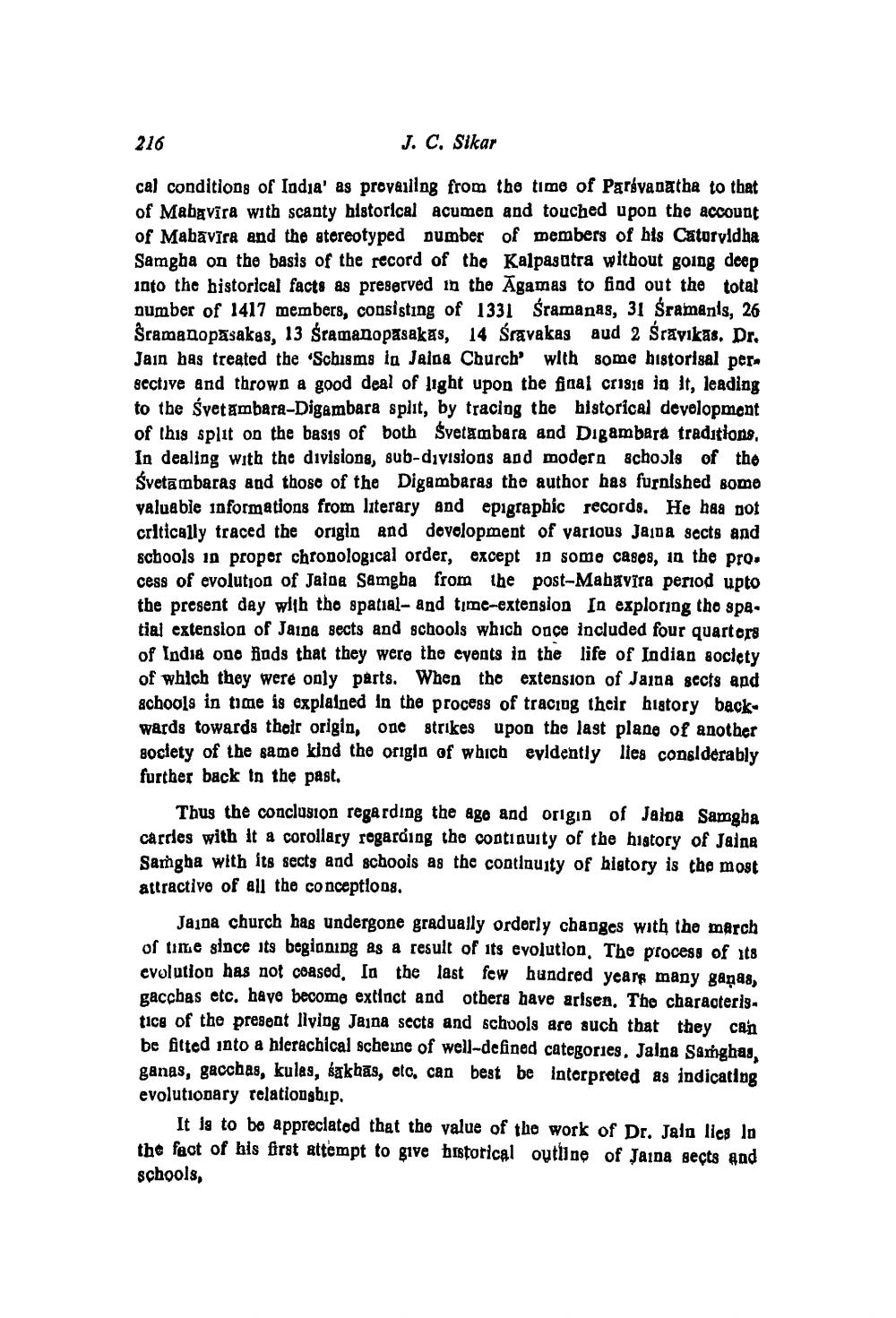________________
216
J. C. Sikar
cal conditions of India' as provalilng from the time of Pariyanatha to that of Mabavīra with scanty historical acumen and touched upon the account of Mabavīra and the stereotyped number of members of his Catoryidha Samgha on the basis of the record of the Kalpasatra without going deep into the historical facts as preserved in the Agamas to find out the total number of 1417 members, consisting of 1331 śramanas, 31 Sramanis, 26 Ŝramanopasakas, 13 śramanopasakas, 14 Śravakas aud 2 Śravikas. Dr. Jain has treated the "Schisms in Jaina Church with some historisal per sective and thrown a good deal of light upon the final cr 1818 in It, leading to the Svetambara-Digambara split, by tracing the historical development of this split on the basis of both Svetambara and Digambará traditions, In dealing with the divisions, sub-divisions and modern schools of the Svetambaras and those of the Digambaras the author has furnished somo valuable informations from literary and epigraphic records. He has not critically traced the origin and development of various Jaida sects and schools in proper chronological order, except in some cases, in the pro. cess of evolution of Jaioa Samgha from the post-Mabavira period upto the present day with the spatial- and time-extension sa exploring tho spa. tial extension of Jaina sects and schools which once included four quarters of India ono fods that they were the cyents in the life of Indian society of which they were only parts. When the extension of Jaina sccts and achools in time is explained in the process of traciog their history back wards towards their origin, onc strikes upon the last plane of another society of the same kind the origin of which evidently lies considerably further back to the past.
Thus the conclusion regarding the age and origin of Jaloa Samgba cardes with it a corollary regarding the continuity of the history of Jaina Samgha with its sects and schools as the continuity of history is the most attractive of all the conceptions.
Jajna church has undergone gradually orderly changes with the march of time since its begioning as a result of its evolution. The process of its evolution has not coased. In the last few hundred years many gaņas, gaccbas etc. have become extinct and others have arisen. The characteristice of the present living Jajna sects and schools are such that they can be fitted into a hierachical scheine of well-defined categories. Jalna Samghas, ganas, gacchas, kulas, sakhas, etc, can best be interpreted as indicating evolutionary relationship.
It is to be appreciated that the value of the work of Dr. Jain lies lo the fact of his first attempt to give historical outline of Jaina sects and schools,




